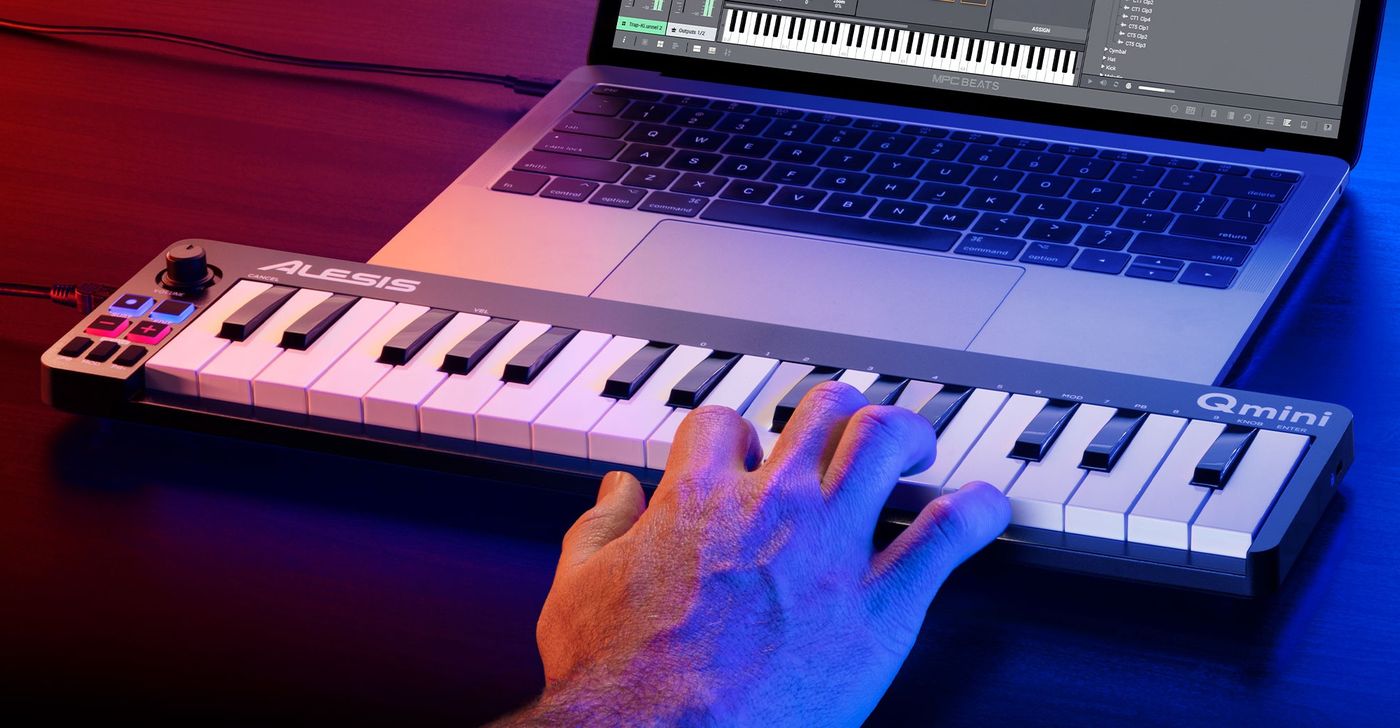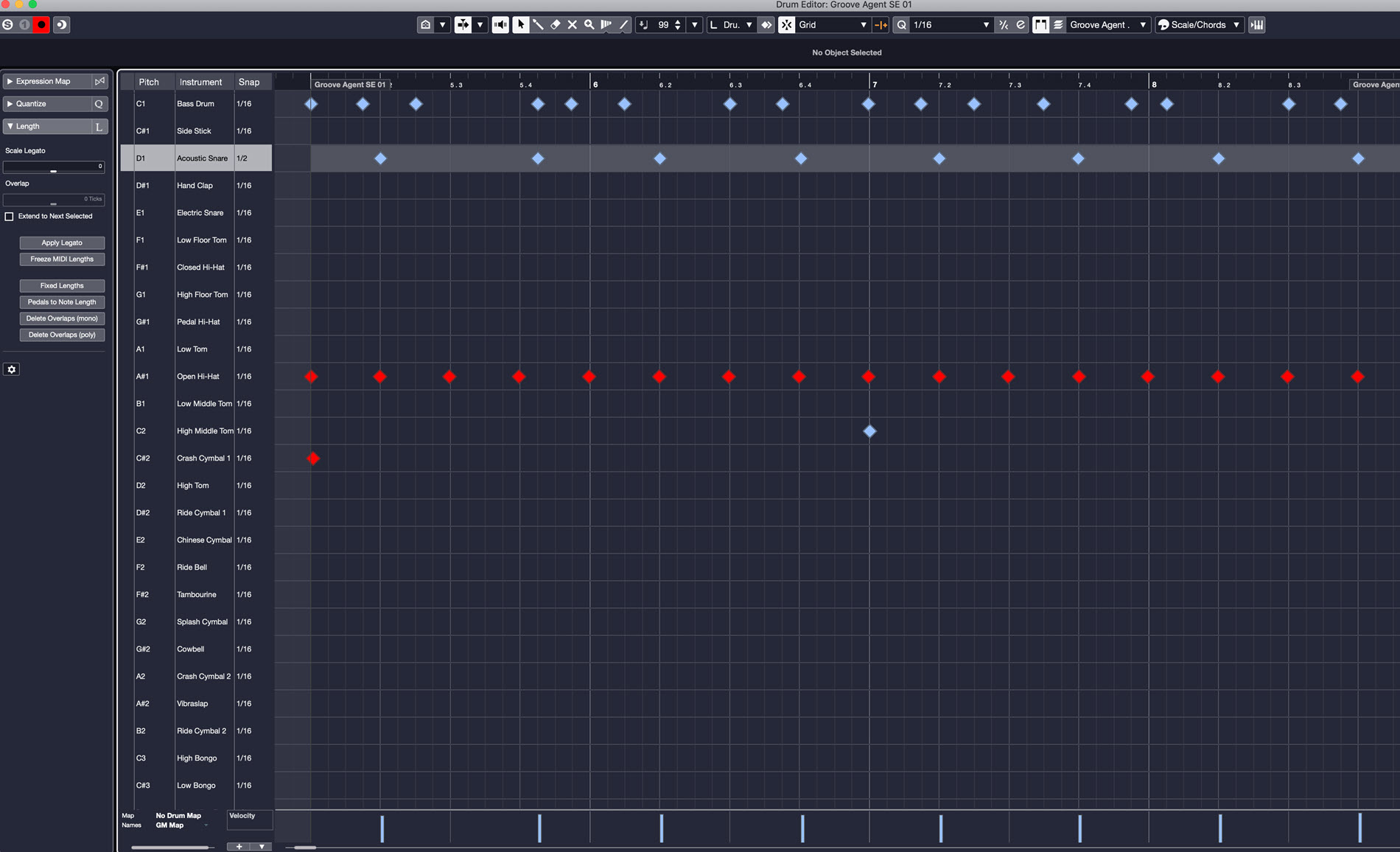Home>Production & Technology>MIDI>How To Get The MIDI Of A Song


MIDI
How To Get The MIDI Of A Song
Modified: February 22, 2024
Learn how to easily extract the MIDI file of any song using simple methods. Discover the best ways to obtain MIDI files for your music projects.
(Many of the links in this article redirect to a specific reviewed product. Your purchase of these products through affiliate links helps to generate commission for AudioLover.com, at no extra cost. Learn more)
Table of Contents
Introduction
Have you ever found yourself captivated by a melody, wishing you could play it on your own musical instrument or use it in a digital music project? Well, the good news is that you can! With the magic of MIDI, you can easily obtain the musical score of your favorite songs and unleash your creativity in countless ways.
MIDI, which stands for Musical Instrument Digital Interface, is a versatile and powerful tool that allows musicians, producers, and enthusiasts to access the intricate details of a musical composition. Whether you're a budding musician eager to learn new tunes or an experienced producer seeking inspiration, MIDI provides a gateway to unlock the secrets of music.
In this guide, we'll delve into the world of MIDI and explore the various methods for obtaining the MIDI of a song. From online MIDI converters to music production software and MIDI controllers, we'll uncover the diverse avenues available for extracting the MIDI data from your favorite tracks. By the end of this journey, you'll be equipped with the knowledge and tools to embark on your own musical adventures, armed with the MIDI files of your beloved songs.
So, if you've ever wondered how to obtain the MIDI of a song, prepare to embark on a fascinating exploration of music, technology, and creativity. Let's unravel the mysteries of MIDI and discover the myriad possibilities it offers for musical expression and innovation.
Understanding MIDI
MIDI, which stands for Musical Instrument Digital Interface, is a universal protocol that revolutionized the way electronic musical instruments communicate with each other. Unlike audio files, which capture the actual sound of music, MIDI data represents the musical notes, pitch, duration, and other parameters in a digital format. This distinction makes MIDI incredibly versatile, as it allows for precise manipulation and interpretation of musical information.
At its core, MIDI serves as a language through which electronic devices, such as keyboards, synthesizers, and computers, can exchange musical data. This data includes note-on and note-off commands, velocity (the force with which a key is pressed), pitch bend, modulation, and various other performance attributes. By transmitting these commands, MIDI enables seamless interaction between different musical devices, empowering musicians and producers to create, edit, and perform music with unparalleled flexibility.
One of the key advantages of MIDI is its lightweight nature. MIDI files are significantly smaller in size compared to audio files, making them easy to store, share, and manipulate. This efficiency is particularly valuable in music production, where large volumes of musical data need to be managed and processed. Additionally, MIDI data can be edited and rearranged with precision, allowing for seamless modifications to the musical arrangement, tempo, and instrumentation.
Furthermore, MIDI empowers musicians to explore the boundaries of creativity and expression. With MIDI, it's possible to manipulate the timing and dynamics of musical performances, experiment with different instrument sounds, and even control lighting and visual effects during live performances. This level of control and adaptability has transformed the landscape of music production and performance, offering endless possibilities for artistic innovation.
In essence, MIDI serves as the backbone of modern music technology, facilitating seamless communication between musical instruments, software applications, and performance systems. Its ability to capture, transmit, and interpret musical data has elevated the art of music creation to new heights, empowering musicians and producers to bring their creative visions to life.
As we delve deeper into the methods for obtaining the MIDI of a song, it's crucial to appreciate the fundamental role that MIDI plays in shaping the contemporary music landscape. By harnessing the power of MIDI, we gain access to a world of musical exploration and expression, where the boundaries of creativity are limited only by our imagination.
Methods for Getting the MIDI of a Song
When it comes to obtaining the MIDI of a song, several methods are available, each offering unique advantages and flexibility. Whether you're a musician looking to dissect a complex musical arrangement or a producer seeking to incorporate elements of a beloved song into a new composition, these methods provide diverse pathways to access the MIDI data of your favorite tracks.
Using Online MIDI Converters
Online MIDI converters serve as convenient tools for extracting MIDI data from audio files. These platforms utilize advanced algorithms to analyze the musical content of a song and generate MIDI representations of the underlying notes and rhythms. By simply uploading an audio file to the converter, users can swiftly obtain the corresponding MIDI file, ready for further exploration and utilization.
Using Music Production Software
Music production software, such as digital audio workstations (DAWs), often includes features for extracting MIDI information from audio recordings. Through the implementation of sophisticated audio-to-MIDI conversion tools, these software packages empower users to convert audio tracks into MIDI data, providing a detailed representation of the musical elements present in the original recording. This method is particularly valuable for producers and composers seeking to deconstruct and reinterpret existing songs within their creative projects.
Using MIDI Controllers
MIDI controllers, including keyboards, pad controllers, and electronic drums, offer a hands-on approach to capturing MIDI data from musical performances. By connecting a MIDI controller to a computer or compatible device, musicians can record their performances in real time, capturing the nuances of their playing as MIDI data. This method not only facilitates the creation of MIDI files from live performances but also enables expressive manipulation of musical parameters, adding a layer of human touch to the MIDI data.
These methods provide a glimpse into the diverse approaches available for obtaining the MIDI of a song. Whether through the seamless conversion capabilities of online tools, the advanced features of music production software, or the expressive potential of MIDI controllers, musicians and producers have a wealth of options to access and utilize MIDI data in their creative endeavors.
As we navigate the realm of MIDI acquisition, it becomes evident that the fusion of technology and musical expression opens doors to endless possibilities. By leveraging these methods, individuals can unravel the intricate layers of musical compositions, breathe new life into existing works, and embark on transformative journeys of creativity and innovation.
Using Online MIDI Converters
Online MIDI converters offer a user-friendly and efficient approach to obtaining MIDI data from audio files. These versatile tools harness the power of advanced algorithms to analyze the musical content of a song and generate MIDI representations of the underlying notes and rhythms. By simply uploading an audio file to the converter, users can swiftly obtain the corresponding MIDI file, ready for further exploration and utilization.
The process typically begins by selecting an audio file, such as an MP3 or WAV recording, and uploading it to the online MIDI converter platform. Once the file is uploaded, the converter utilizes sophisticated analysis techniques to interpret the musical elements present in the audio recording. This includes identifying the pitch, duration, and timing of individual notes, as well as capturing the nuances of the performance, such as dynamics and articulation.
Upon completion of the analysis, the online MIDI converter generates a MIDI representation of the song, encapsulating the musical intricacies in a digital format. The resulting MIDI file contains a wealth of information, including note data, tempo, and other performance attributes, providing a comprehensive snapshot of the original musical composition.
One of the key advantages of using online MIDI converters is the accessibility they offer to musicians and enthusiasts. With a simple and intuitive interface, these platforms enable users to swiftly convert audio recordings into MIDI files without the need for specialized software or technical expertise. This accessibility makes it possible for individuals of varying skill levels to engage with MIDI data, opening doors to new avenues of musical exploration and creativity.
Furthermore, online MIDI converters serve as valuable tools for educational and analytical purposes. Musicians and students can utilize these platforms to dissect complex musical arrangements, analyze melodies and harmonies, and gain a deeper understanding of the compositional elements within a song. This analytical capability empowers individuals to engage with music in a more profound and insightful manner, fostering a deeper appreciation for the art of composition and performance.
In summary, online MIDI converters offer a streamlined and accessible means of obtaining MIDI data from audio recordings. By leveraging advanced algorithms and user-friendly interfaces, these platforms empower musicians, producers, and enthusiasts to unlock the musical secrets hidden within their favorite songs, paving the way for new creative endeavors and musical discoveries.
Using Music Production Software
Music production software, often referred to as digital audio workstations (DAWs), serves as a versatile and powerful tool for musicians, producers, and composers. Within the realm of MIDI acquisition, these software packages offer advanced features for extracting MIDI information from audio recordings, providing a detailed representation of the musical elements present in the original tracks.
The process of obtaining MIDI data through music production software typically involves the utilization of sophisticated audio-to-MIDI conversion tools. These tools are designed to analyze audio recordings and translate the sonic information into MIDI data, capturing the nuances of the performance and the underlying musical content. By leveraging cutting-edge signal processing algorithms and pattern recognition techniques, music production software can accurately extract pitch, timing, dynamics, and other musical attributes from audio recordings, generating MIDI representations that faithfully preserve the essence of the original performances.
One of the primary advantages of using music production software for MIDI extraction is the level of control and customization it offers to users. These platforms often provide a range of adjustable parameters and settings, allowing musicians and producers to fine-tune the audio-to-MIDI conversion process according to their specific requirements. From adjusting the sensitivity of pitch detection to refining the quantization of rhythmic elements, users can tailor the conversion process to achieve optimal results, ensuring that the generated MIDI data aligns seamlessly with their creative vision.
Furthermore, music production software empowers users to integrate the extracted MIDI data into their creative projects with ease. Once the MIDI representation of an audio recording is obtained, it can be seamlessly integrated into the digital workspace of the software, where it becomes a flexible and manipulable musical asset. This opens up a world of possibilities for composers and producers, enabling them to rework, rearrange, and reinterpret existing musical material, as well as incorporate it into new compositions and arrangements.
Additionally, the integration of audio-to-MIDI conversion capabilities within music production software enhances workflow efficiency and creative exploration. By consolidating the process of MIDI extraction within the software environment, users can seamlessly transition from audio recordings to MIDI representations within a unified workspace, streamlining the creative process and eliminating the need for external tools or complex workflows.
In essence, music production software stands as a cornerstone of MIDI acquisition, offering a comprehensive and customizable approach to extracting MIDI data from audio recordings. With its advanced audio-to-MIDI conversion tools, flexible integration capabilities, and workflow-enhancing features, music production software empowers musicians and producers to delve into the depths of musical compositions, unraveling their intricacies and harnessing them for new creative endeavors.
Using MIDI Controllers
MIDI controllers, including keyboards, pad controllers, and electronic drums, offer a hands-on approach to capturing MIDI data from musical performances. These versatile instruments serve as conduits for translating expressive gestures and musical nuances into digital MIDI information, allowing musicians to infuse their performances with a human touch while capturing the subtleties of their playing in a digital format.
The process of utilizing MIDI controllers to obtain MIDI data begins with the physical interaction between the musician and the instrument. By connecting a MIDI controller to a computer or compatible device, musicians can engage in live performances, improvisations, or structured recordings, during which the MIDI controller captures their musical gestures in real time, translating them into MIDI data that encapsulates the dynamics, articulation, and nuances of the performance.
One of the key advantages of using MIDI controllers lies in the expressive potential they offer to musicians. Unlike traditional methods of MIDI extraction, which often involve post-recording analysis and conversion, MIDI controllers enable performers to directly imprint their musical expressions onto the generated MIDI data. This direct correlation between physical performance and digital MIDI output preserves the authenticity and emotional depth of the musician's playing, providing a rich and nuanced representation of the performance.
Furthermore, MIDI controllers empower musicians to explore a wide range of musical styles and genres, spanning from intricate piano compositions to dynamic drum patterns and melodic synth lines. The versatility of MIDI controllers allows performers to engage with diverse musical contexts, leveraging the instrument's capabilities to capture the unique characteristics of each performance, whether it be the nuanced phrasing of a piano piece or the rhythmic intricacies of a percussive arrangement.
In addition to capturing live performances, MIDI controllers offer a platform for real-time manipulation and improvisation, enabling musicians to shape and mold the MIDI data as they play. This interactive approach to MIDI acquisition fosters a fluid and dynamic creative process, where performers can experiment with musical ideas, explore variations in tempo and dynamics, and engage in spontaneous musical dialogue with the MIDI controller as their expressive partner.
Ultimately, MIDI controllers stand as a gateway to capturing the essence of musical performances in a digital format, preserving the artistry and individuality of musicians while providing a rich source of MIDI data for creative exploration. By harnessing the expressive potential of MIDI controllers, musicians can bridge the gap between physical performance and digital representation, unlocking new realms of musical expression and innovation.
Conclusion
In the realm of music and technology, the quest to obtain the MIDI of a song unveils a world of boundless creativity and innovation. As we traverse the diverse methods for acquiring MIDI data, we are enveloped in a tapestry of musical expression, technological prowess, and the timeless allure of artistic exploration.
From the realm of online MIDI converters, where the seamless fusion of algorithms and user-friendly interfaces opens doors to musical discovery, to the domain of music production software, where sophisticated audio-to-MIDI conversion tools empower composers and producers to unravel the intricate layers of musical compositions, each method offers a unique avenue for engaging with MIDI data.
The journey extends to the realm of MIDI controllers, where musicians wield expressive instruments to capture the nuances of their performances in real time, bridging the gap between physical artistry and digital representation. Through these diverse pathways, individuals are empowered to dissect, reinterpret, and infuse their creative projects with the essence of their favorite songs, transcending boundaries and igniting the flames of musical innovation.
As we conclude this exploration, it becomes evident that the acquisition of MIDI data is not merely a technical endeavor; it is a journey of artistic revelation and boundless potential. The MIDI files obtained through these methods serve as gateways to musical exploration, offering insights into the intricacies of composition, the dynamics of performance, and the interplay of technology and artistry.
Furthermore, the accessibility and versatility of MIDI data pave the way for new horizons in musical education, analysis, and creative expression. Musicians, students, and enthusiasts can delve into the depths of musical compositions, dissecting melodies, harmonies, and rhythms with newfound insight and appreciation. The fusion of technology and musical expression unfolds a tapestry of endless possibilities, where the boundaries of creativity are limited only by the depths of our imagination.
In essence, the quest to obtain the MIDI of a song transcends mere technicality; it embodies the spirit of musical exploration and the relentless pursuit of artistic understanding. Through the diverse methods explored, individuals are invited to embark on transformative journeys, where the language of MIDI becomes a vessel for boundless creativity, a conduit for musical expression, and a bridge between the realms of inspiration and innovation.











